The Magnificent Kingfisher: Nature’s Jewel by the Water.
1. Stunning Appearance and Colorful Beauty
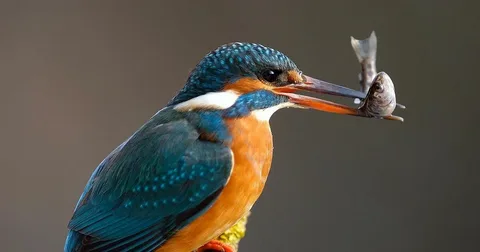
Beautiful Kingfishers are best known for their dazzling feathers and distinctive body structure. These small to medium-sized birds generally have bright blue, green, orange, and white plumage, which makes them stand out beautifully against their natural surroundings. Their compact bodies, short legs, and sharp, pointed beaks are perfectly adapted for catching prey.
Males and females are often similar in color, although in some species, subtle differences exist. Their brilliant feathers are not due to pigments but rather the microscopic structure of the feathers, which reflect light to produce vibrant shades. This unique feature gives kingfishers a jewel-like appearance, making them one of the most eye-catching bird species in the world of Beautiful kingfisher.
2. Habitat and Distribution
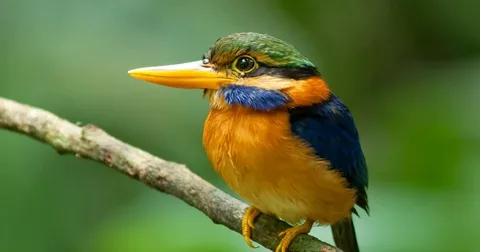
Beautiful Kingfishers are widely distributed across tropical and temperate regions, preferring environments near water bodies.
There are over 90 species of kingfishers worldwide, and each species has adapted to its unique environment. For example:
- Common Kingfisher (Alcedo atthis) thrives in Europe and Asia.
- Collared Kingfisher prefers coastal regions and mangroves.
- Laughing Kookaburra, a famous kingfisher from Australia, is well-known for its distinctive call.
Some species even inhabit woodlands, savannas, and open grasslands, showing the incredible adaptability of these birds to various ecosystems.
3. Hunting Techniques and Diet
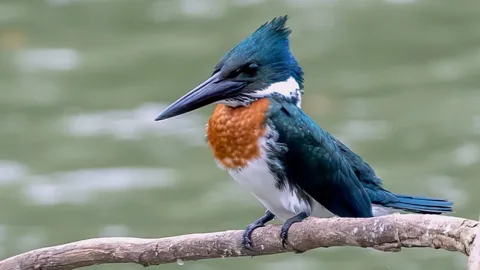
Kingfishers are exceptional hunters, known for their incredible precision when diving into water.
The hunting process typically involves:
- Perching Quietly – The kingfisher waits patiently on a branch overlooking the water.
- Spotting the Prey – With its sharp vision, it locks onto the movement of fish or aquatic insects.
- Diving Swiftly – The bird dives headfirst into the water with amazing speed and accuracy.
- Emerging with Food – Using its powerful beak, the kingfisher grabs its prey and returns to the perch.
Their diet mainly consists of fish, insects, crustaceans, amphibians, and small reptiles, depending on the species and habitat. Some kingfishers even eat berries, demonstrating their omnivorous tendencies.
4. Breeding and Nesting Behavior
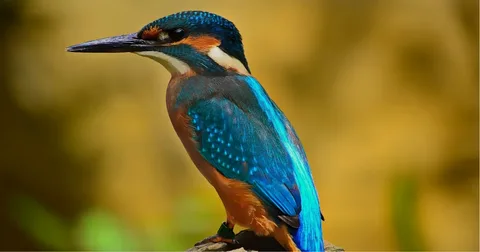
Kingfishers are monogamous birds, meaning they usually form long-term bonds with their partners. Breeding season varies depending on the region but often coincides with times of abundant food supply.
These tunnels can be up to a meter long and end in a small chamber where the eggs are laid. The female usually lays between 4 to 7 eggs, and both parents take turns incubating them.
This intense parental care highlights the kingfisher’s dedication to ensuring the survival of its young.
5. Cultural Significance and Conservation
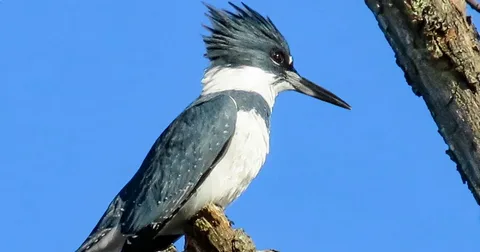
Throughout history, kingfishers have held special meaning in various cultures. In many Asian cultures, their vibrant colors symbolize happiness and peace. Deforestation and the draining of wetlands have significantly reduced their nesting and hunting grounds. The kingfisher is a colorful bird with bright plumage and a sharp beak. Found near rivers and lakes, it dives swiftly to catch fish, symbolizing grace, precision, and natural beauty. This unique feature gives kingfishers a jewel-like appearance, making them one of the most eye-catching bird species in the world of Beautiful kingfisher.
 Birds Drawing Birds Drawing
Birds Drawing Birds Drawing
